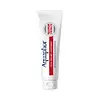What's inside
What's inside
 Key Ingredients
Key Ingredients

No key ingredients
 Benefits
Benefits

 Concerns
Concerns

 Ingredients Side-by-side
Ingredients Side-by-side

Hydrocortisone
Water
Skin ConditioningCetearyl Alcohol
EmollientGlycerin
HumectantCeteareth-20
CleansingIsopropyl Myristate
EmollientCyclopentasiloxane
EmollientBenzyl Alcohol
PerfumingIsostearyl Neopentanoate
EmollientCetyl Palmitate
EmollientPEG-40 Stearate
EmulsifyingPotassium Lactate
BufferingCeramide NP
Skin ConditioningCeramide AP
Skin ConditioningPotassium Sorbate
PreservativeCeramide EOP
Skin ConditioningCarbomer
Emulsion StabilisingNiacinamide
SmoothingDimethicone/Vinyltrimethylsiloxysilicate Crosspolymer
Dimethyl Mea
BufferingAloe Barbadensis Leaf Juice
Skin ConditioningMethylparaben
PreservativeSodium Lauroyl Lactylate
EmulsifyingSodium Hyaluronate
HumectantSodium Benzoate
MaskingCholesterol
EmollientAvena Sativa Kernel Extract
AbrasivePhenoxyethanol
PreservativeCitric Acid
BufferingPhytosphingosine
Skin ConditioningXanthan Gum
EmulsifyingMaltodextrin
AbsorbentChrysanthemum Parthenium Extract
Skin ConditioningEthylhexylglycerin
Skin ConditioningHydrocortisone, Water, Cetearyl Alcohol, Glycerin, Ceteareth-20, Isopropyl Myristate, Cyclopentasiloxane, Benzyl Alcohol, Isostearyl Neopentanoate, Cetyl Palmitate, PEG-40 Stearate, Potassium Lactate, Ceramide NP, Ceramide AP, Potassium Sorbate, Ceramide EOP, Carbomer, Niacinamide, Dimethicone/Vinyltrimethylsiloxysilicate Crosspolymer, Dimethyl Mea, Aloe Barbadensis Leaf Juice, Methylparaben, Sodium Lauroyl Lactylate, Sodium Hyaluronate, Sodium Benzoate, Cholesterol, Avena Sativa Kernel Extract, Phenoxyethanol, Citric Acid, Phytosphingosine, Xanthan Gum, Maltodextrin, Chrysanthemum Parthenium Extract, Ethylhexylglycerin
Ingredients Explained
These ingredients are found in both products.
Ingredients higher up in an ingredient list are typically present in a larger amount.
Glycerin is already naturally found in your skin. It helps moisturize and protect your skin.
A study from 2016 found glycerin to be more effective as a humectant than AHAs and hyaluronic acid.
As a humectant, it helps the skin stay hydrated by pulling moisture to your skin. The low molecular weight of glycerin allows it to pull moisture into the deeper layers of your skin.
Hydrated skin improves your skin barrier; Your skin barrier helps protect against irritants and bacteria.
Glycerin has also been found to have antimicrobial and antiviral properties. Due to these properties, glycerin is often used in wound and burn treatments.
In cosmetics, glycerin is usually derived from plants such as soybean or palm. However, it can also be sourced from animals, such as tallow or animal fat.
This ingredient is organic, colorless, odorless, and non-toxic.
Glycerin is the name for this ingredient in American English. British English uses Glycerol/Glycerine.
Learn more about GlycerinHydrocortisone is the name for the hormone cortisol when used in medication.
It is medication and not technically a cosmetic ingredient. Most countries allow topical creams to contain up between 0.05 - 2.5% (depending on the country) of hydrocortisone without a prescription. Higher amounts usually require a prescription from a professional.
Hydrocortisone can help relieve rashes, eczema, itching, and other inflammation induced skin conditions.
We recommend speaking with a professional about using this ingredient.
Learn more about Hydrocortisone